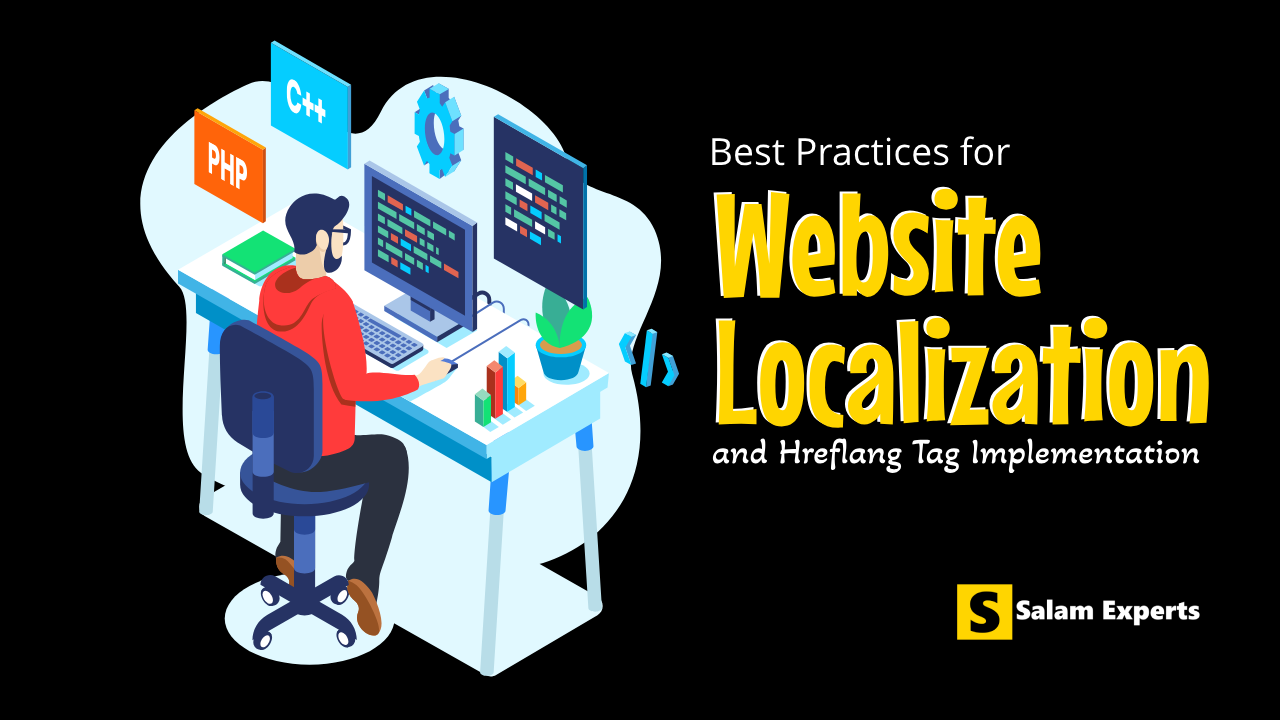International SEO: Best Practices for Website Localization

What is International SEO?
International SEO is the process of optimizing a website to improve its visibility in search engines for users in different countries or regions and in different languages. It ensures that your content is accessible and relevant to a global audience by tailoring your website’s structure and content to meet the specific needs and search preferences of users in various locations.
Key Components of International SEO
- Language Targeting: Implementing
hreflangtags and providing localized content ensures search engines understand which language version of your content to display for users based on their preferences. - Geotargeting: Setting up geotargeting helps search engines determine which country your website or certain parts of it are relevant to. This can be done using country-specific domains (ccTLDs), subdomains, or subdirectories.
- Localized Keywords: Conducting keyword research in different languages and regions ensures that you target the search terms users are likely to use in specific areas, improving your site’s relevance in international markets.
- Technical Optimization: Ensuring that your website’s technical elements, such as site speed, mobile-friendliness, and crawlability, are optimized for users in various countries is essential for successful international SEO.
Benefits of International SEO
- Increased visibility in global search results
- Enhanced user experience for international visitors
- Higher traffic from diverse markets
- Potential for increased conversions and sales from global audiences
If you’re looking to attract global audiences, ensuring your website speaks to users in their local language and aligns with their regional preferences is essential. At salamexperts.com, we specialize in helping businesses optimize their international websites with the correct localization setup and hreflang tag implementation.
hreflang Validator Tool
[hreflang_validator]
Here’s how you can get started:
1. Choose the Right URL Structure for Internationalization
The first step in any localization strategy is deciding how to structure your URLs for different regions and languages. Here are the common options:
- Country-Specific Domains (ccTLDs): Using country-specific top-level domains, like
example.frfor France orexample.defor Germany, signals to search engines that your site is intended for users in those countries. This is ideal if you’re focused on ranking highly in local search results. - Subdomains: Use subdomains such as
fr.example.comto organize your content by country or language while keeping everything under one domain. - Subdirectories: Create language-specific subdirectories like
example.com/fr/for different versions of your site. This consolidates SEO benefits under one domain.

2. Implement Hreflang Tags Correctly
When managing international websites, using hreflang tags is vital to ensure search engines display the right language version of your site to the correct audience.
Self-Referential Tags: Always include a self-referential hreflang tag, ensuring that each page references itself. For example, on a German page (www.example.com/de), the hreflang tag would look like this:
<link rel="alternate" hreflang="de" href="https://www.example.com/de/" />
<link rel="alternate" hreflang="en" href="https://www.example.com/en/" />
<link rel="alternate" hreflang="fr" href="https://www.example.com/fr/" />
This ensures that the German page links back to itself, as well as to the English and French versions.
Reciprocal Links: Every version of your website must link to all other versions. For example, if your French page (www.example.com/fr) links to the English version (www.example.com/en), the English version must also link back to the French page. Here’s an example setup:
<link rel="alternate" hreflang="fr" href="https://www.example.com/fr/" />
<link rel="alternate" hreflang="en" href="https://www.example.com/en/" />
<link rel="alternate" hreflang="de" href="https://www.example.com/de/" />
This reciprocal linking improves search engine understanding and prevents ranking issues. Need help fixing your hreflang tags? Contact us now for a quick setup!
3. Don’t Force Redirects — Provide Language Options
Instead of automatically sending users to a specific version of your site, provide clear language or region options. This enhances user experience and helps search engines discover all language versions.
Example: A fashion retailer can include a country selector on its homepage, allowing users to choose their language. This gives users control and boosts SEO. Let us set up your language selector today!
4. Optimize Content for Local Audiences
Translating your content isn’t enough — you need to localize it for each audience. This means adjusting your messaging and keywords to fit the cultural and regional preferences of your users.
- Cultural Nuances: Adjust your messaging to resonate with local audiences. For example, American slang may not translate well to a British audience.
- Local SEO: Use localized keywords to improve visibility. Conduct keyword research for each region.
Want to boost your local SEO and attract the right audience? Let our experts optimize your site!
5. Ensure a Seamless User Experience
User experience can vary across cultures. Make sure your website is mobile-friendly and fast to load in all regions.
- Mobile Optimization: Ensure that all versions of your site are mobile-friendly, especially in regions where mobile access is predominant.
- Localized Support: Provide customer service and support in local languages to enhance user trust.
6. Target Specific Markets Without Overdoing Localization
It’s tempting to localize for as many regions as possible, but we recommend focusing on markets where you see the most growth potential. Prioritize quality over quantity.
Example: A software company may choose to focus on English, German, and Spanish language versions, rather than spreading efforts too thin.
Struggling to decide which markets to target? Talk to us today!
Conclusion
Optimizing your website for international audiences is more than just translating text. It’s about ensuring that your site is structured correctly, localized for cultural relevance, and discoverable by search engines. At Salam Experts, we specialize in setting up hreflang tags and delivering localization services that ensure your global audience can easily find and navigate your website.
Get in touch with us to see how we can help take your site global with proper localization and international SEO strategies!
FAQs about Hreflang Tags and Website Internationalization
What is an hreflang tag?
An hreflang tag is an HTML attribute that tells search engines the language and geographical targeting of a webpage. It helps serve the correct language version of your content to users based on their language and location.
Why are hreflang tags important for SEO?
Hreflang tags help prevent duplicate content issues by indicating language variants of the same page to search engines. This ensures users see the right version of your site, improving SEO and user experience.
What are the common mistakes when implementing hreflang tags?
Common errors include using invalid language codes, missing self-referential tags, forgetting reciprocal links between versions, and incorrect implementation in sitemaps or HTTP headers.
What is the best way to structure a URL for international websites?
The three main approaches are country-specific domains (ccTLDs), subdomains, or subdirectories. Each has its pros and cons, but subdirectories are often the most SEO-friendly as they consolidate authority under a single domain.
Should I automatically redirect users based on their location?
It’s generally better to give users the option to choose their preferred language or region rather than automatically redirecting them. Forced redirects can lead to a poor user experience and might confuse search engines.
How can I check if my hreflang tags are set up correctly?
You can use tools like Google Search Console or online hreflang validation tools to check if your hreflang tags are properly configured. Need help fixing them? Contact us.
How many languages should I target for my website?
Focus on the languages and regions where you see the most traffic or potential growth. Over-localizing without proper resources can lead to poor user experience and ineffective SEO.
Can hreflang tags be used in sitemaps?
Yes, hreflang tags can be implemented within XML sitemaps, which can be especially useful for large websites or those with dynamic content.

